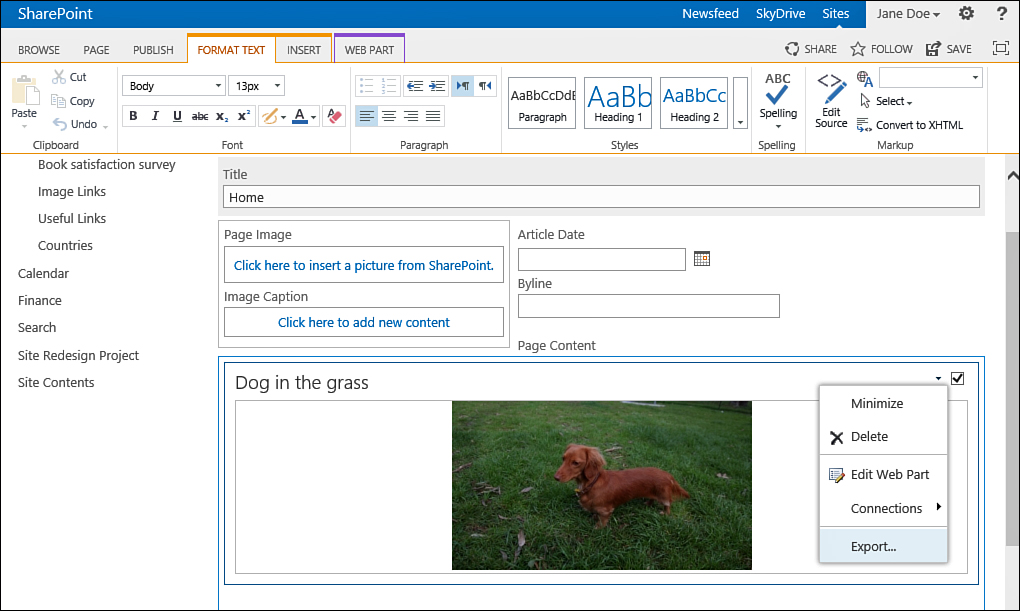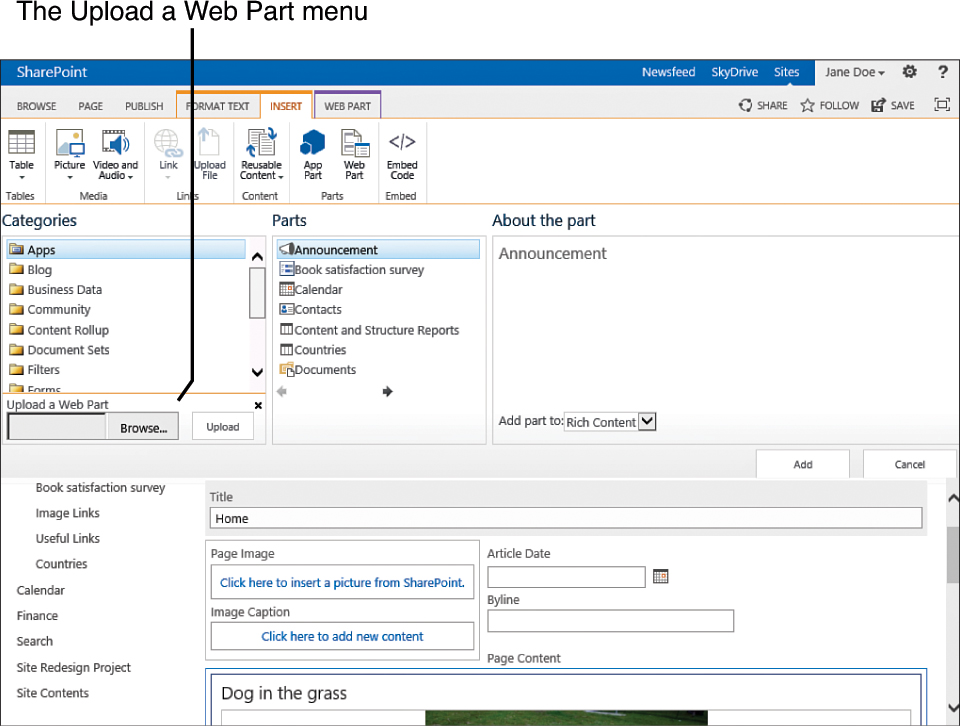Scenario/Problem:
After you have configured a web part to your liking, you want to save
that web part and use it again in another page with similar settings.
Solution:
To save the web part and use it again, you must export the web part and
then import it to the other page. The following sections explain how to
export a web part and then import it to another page.
Export a Web Part
Exporting a web part involves saving the web
part’s settings as a file to your computer. Not all web parts support
this option, and in some web parts, the owner of the page might choose
to disable this option. In those cases, you should look in the options
in that web part’s properties tool pane to see whether the option to allow the web
part to be exported is enabled. (Not all web parts have this option;
some web parts cannot be exported.)
To export a web part that allows exporting, switch the page that has the web part to editing mode and then hover your
mouse over the web part’s title row. Doing so exposes a small black
triangle on the right corner of the title row. Click this triangle and
expose the web part’s drop-down menu, shown in Figure 1. If the web part allows exporting, the Export option appears on the menu.

FIGURE 1 The web part’s drop-down menu.
After you select the Export option, a File
Download dialog appears, allowing you to save the web part to your
computer. You can save the file anywhere on your computer so that you
can import it later (see the following section).
Import a Web Part
To import a web part that you have previously saved to your computer, open the page in editing mode and click the web part zone where you want the
web part to be added, as if you were adding a new web part. However,
when the dialog with the list of web parts appears, instead of
selecting a web part from the list, click the Upload a Web Part link
shown under the Categories box. When you click this link, you see a button to browse and a button to upload the file you have exported, as shown in Figure 2.

FIGURE 2 The Upload a Web Part menu appears under the list of categories.
After the web part is uploaded, it is added
to the Imported Web Parts category in the web part selection pane.